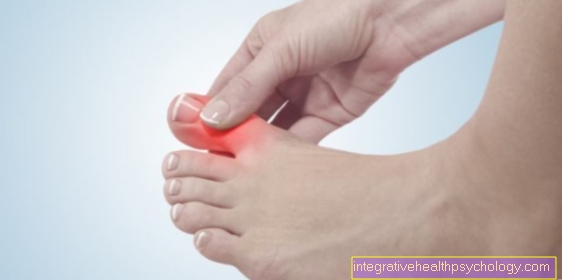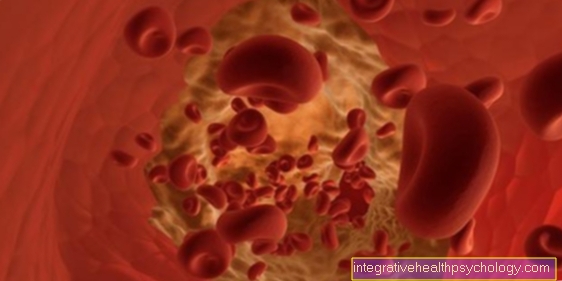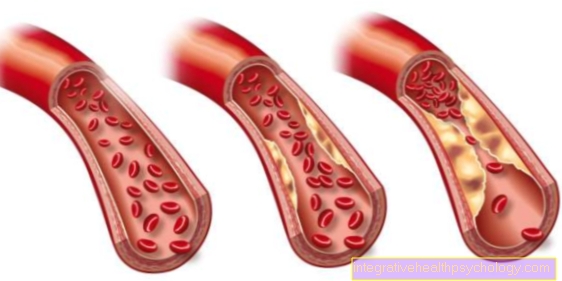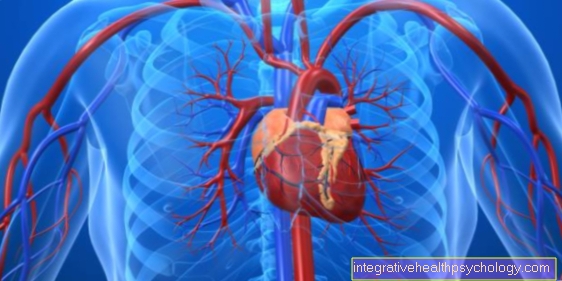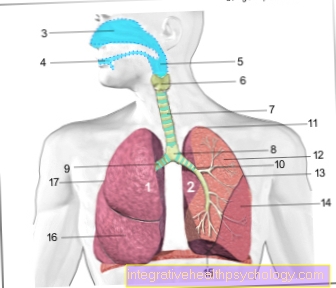Progressive supranuclear palsy
Synonyms in a broader sense
Formerly according to the first description: "Steele-Richardson-Olszewski syndrome"
introduction
Progressive supranuclear palsy (PSP) is a rare disease. Approx. 12,000 people in Germany suffer from progressive supranuclear palsy (PSP).
Progressive supranuclear palsy (PSP) has parallels in the course and symptoms to Parkinson's disease. Especially in the early stages, the disease responds to drugs that are given for Parkinson's disease. The disease is still largely not understood today and a lot of research is still needed. This topic is intended to provide an overview of the disease and make it accessible to a wider public.
Progressive supranuclear palsy was first described in 1963 by Doctors and Steele, Richardson, and Olszewski. Hence the earlier name "Steele-Richardson-Olszewski Syndrome".

The occurrence in the population
The main age of the disease is between 50 and 70 years.
Men and women are said to be affected roughly equally.
The symptoms
The initial symptoms include:
- Dizziness
- Balance disorders
- Unsteadiness
- sudden falls
- Difficulty reading
- Climb stairs
Eye movement disorder
Eye movements and body movements have to be coordinated with each other in order to perceive the objects in our environment.
All eye movements are specifically controlled and corrected by the brain. With progressive supranuclear palsy (PSP), you can usually notice a slowdown in eye movements even in the early stages of the disease. The changes in eye movements are based on changes in the brain stem.
As a result, double vision occurs and the eyesight continuously decreases, although the actual vision is not disturbed. Only the fixation on objects is no longer possible or only possible to a limited extent.
In the further course, a squint is possible, the fitness to drive is no longer given.
Personality changes
Early symptoms of progressive supranuclear palsy (PSP) can be increased irritability or lack of understanding.
Changes in mood, including depression, can also occur.
Sleep disorders are common in progressive supranuclear palsy (PSP).
A slowdown in thinking (bradyphrenia) can initially also suggest Alzheimer's disease.
The diagnosis
The following examination methods for establishing a diagnosis are possible:
- physical examination
- Magnetic resonance imaging (MRI) -> representation of the changed shape of the brain stem
- Nuclear Medicine Procedures (PET) - Dopamine Activity
- Posturography
- Examination of the nerve water (liquor) to rule out other alternative diseases
Alternative diseases
Alternative diseases that must be excluded:
- Parkinson's disease
- Alzheimer's disease
- Wilson disease
This is a rare copper storage disease that can also cause disorders in the brain stem, known as substanceia nigra.
You can find out more under our topic: Wilson's disease
Similarity to Parkinson's disease
Regions in the brain that are responsible for the eyes are in direct proximity to regions for speaking and swallowing, which can also be affected in the further course of the disease, which can also suggest Parkinson's disease.
The speed of speech is slower compared to patients with Parkinson's disease. The pitch of the voice is also lower than that of patients with Parkinson's disease. Unsteady gait also increasingly occurs as the disease progresses.
The “rigor” that is typical for Parkinson's - one that can be identified as a waxy resistance in the examination when the joints are passively moved - occurs in patients with progressive supranuclear palsy.
Trembling (med. Tremor), as it typically occurs in Parkinson's disease, is rather rare in progressive supranuclear palsy (PSP).
The therapy
The central therapeutic approach is a drug one. However, drug therapy can alleviate the symptoms of progressive supranuclear palsy (PSP), but the disease itself cannot be stopped.
The following drugs are used:
- L-Dopa (converts the brain into the neurotransmitter dopamine)
Usually the effect wears off after 2-3 years. - Amantadine
- Dopamine agonists
- Rasagaline and selegiline
reduce the breakdown of dopamine in the brain - Amitriptyline and imipramine
both so-called tricyclic antidepressants, they are used in a depressed mood - Serotonin reuptake inhibitors (SSRIs)
- Botulinum toxin is used to treat eyelid spasm
- Coenzyme Q10
Also read the article: Therapy of Parkinson's disease.
How is the process?
Depending on the type of supranuclear palsy, a slightly different course is typical. In classic progressive supranuclear palsy (Richardson's syndrome), gait instability with staggering gait, unstable posture and the resulting falls occur. Vertical eye movements can only be carried out more slowly, and slight cognitive impairments gradually develop, as is the case with dementia in the early stages.
In the course of the next three to six years, symptoms of speech and swallowing disorders as well as complete paralysis of the vertical eye movements appear. The cognitive deficits are also advancing.
In other forms, the movement disorders in particular can appear more pronounced and early, while cognitive symptoms appear later in the course of the disease (PSP akinesia with gait blockade). In the same way, cognitive abilities - such as speaking - can initially be lost, while movement disorders appear late in the course (PSP-PNFA, progressive, non-fluent GSP aphasia).
Does supranuclear palsy limit life expectancy?
Unfortunately, supranuclear palsy can severely limit life expectancy. As a rule, survival is only six to twelve years after the disease first appeared.
However, since the disease usually only occurs in the sixth or seventh decade of life, many people affected can still reach a normal age. Most of the causes of death are difficulty breathing and swallowing, as well as the resulting infections that occur later in the disease. Previously, falls can bring the patient into the wheelchair, which can further promote certain infections.
Inheritance
The exact mechanism of development of progressive supranuclear palsy (PSP) is still unclear.
As with Parkinson's disease, the disease leads to the destruction of nerve cells in important areas of the brain (med. Substantia nigra).
The substantia nigra is a part of the brain that is located in the so-called brain stem and is a central control center for motor tasks.
It is still unknown why these nerve cells in particular die.
Since these cells are also affected in Parkinson's disease, one can understand why Parkinson's disease drugs also work for a limited time in progressive supranuclear palsy (PSP).
A variant of a gene (tau gene) was found on chromosome 17 in progressive supranuclear palsy (PSP) patients.A leading research group in Germany is investigating genetic defects as the background to progressive supranuclear palsy (PSP).
Despite the known genetic defect, it does not seem to be inherited.
The disease risk for von progressive supranuclear palsy (PSP) patients does not differ from that for the normal population.


